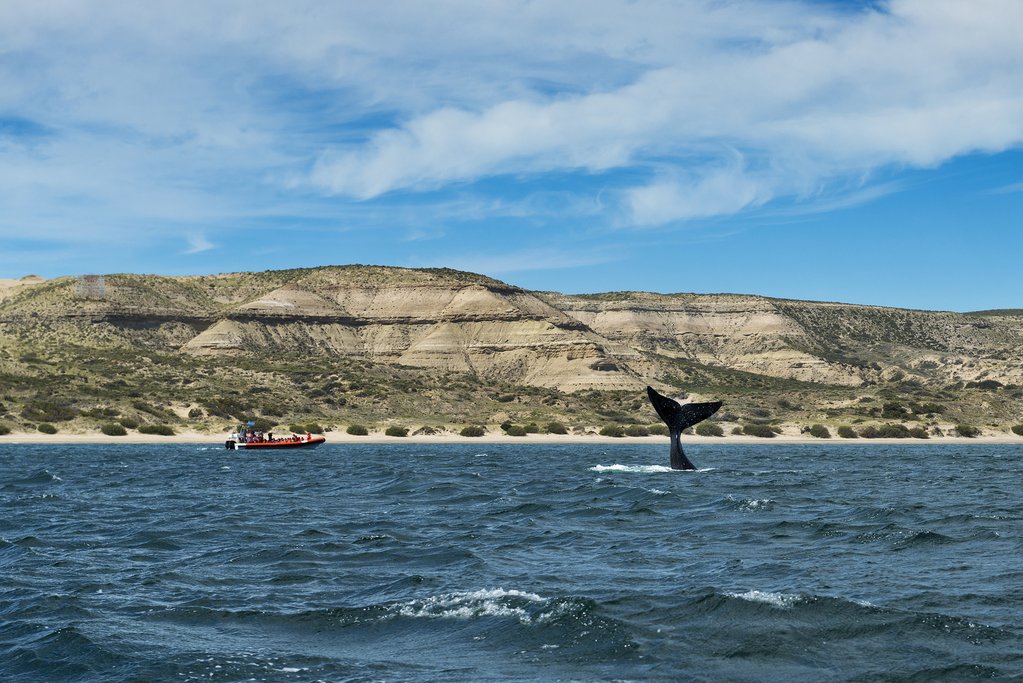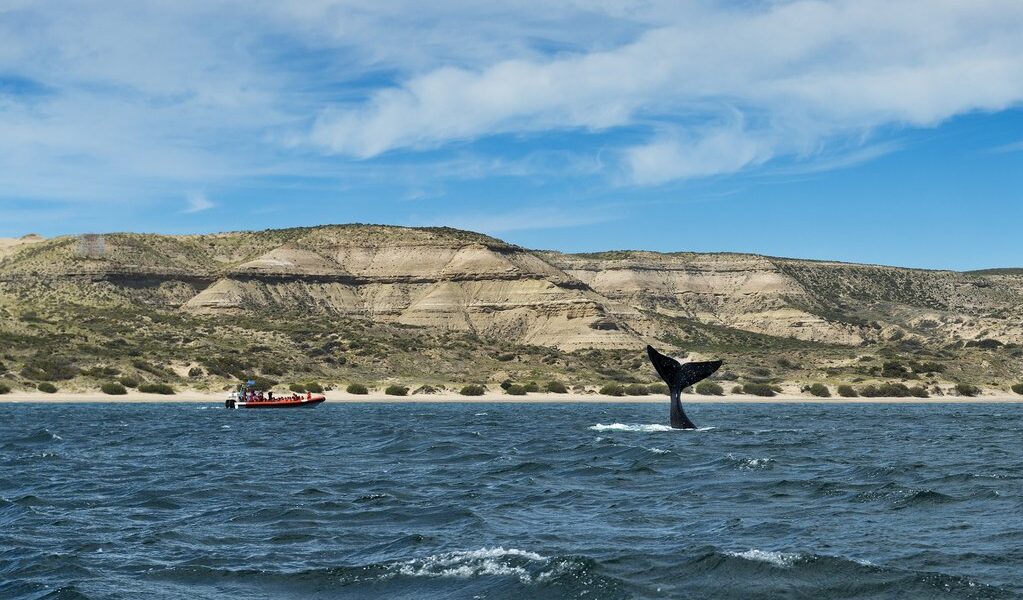
Spring becomes official this month. As ski season winds down, September is a great time to experience Buenos Aires and the country’s northern region for the best sightseeing and weather (with few crowds). This is also the best time for whale watching around Península Valdés. Read this monthly guide to learn more.
Argentina in September: A Traveler’s Guide
## Weather in Argentina during September
September heralds a welcome shift in Argentina, marking the transition from the cooler winter months to the burgeoning promise of spring. This makes it a particularly appealing time to explore many regions of this vast and diverse country. In Buenos Aires, the vibrant capital city and the initial point of entry for most international visitors, the weather begins to moderate pleasantly. Expect daytime highs to hover around the mid-60s Fahrenheit, accompanied by a noticeable decrease in rainfall, with only a few days of precipitation typically recorded throughout the month. This is also when the city’s iconic jacaranda trees burst into bloom, transforming the urban landscape into a spectacle of purple hues.
Venturing further south towards Northern Patagonia, the anticipation of spring continues to build. Towards the latter part of September, particularly in the vicinity of the picturesque Lakes District, keen observers might even be fortunate enough to witness the first wildflowers of the season beginning to emerge, adding splashes of color to the still-dormant landscape.
However, it’s important to remember that Southern Patagonia operates on a slightly different schedule. Spring’s full embrace doesn’t truly arrive until November in this region. In September, daily high temperatures tend to remain in the 40s Fahrenheit. Despite the continued coolness, there are advantages to visiting at this time. You’ll encounter less moisture in the air and benefit from longer daylight hours, providing more opportunities for outdoor exploration and adventures amidst the stunning Patagonian scenery. Regardless of your chosen destination within Argentina, it’s always wise to pack a variety of clothing layers. Evenings can be quite chilly once the sun has set, and the weather in certain regions can be unpredictable, so being prepared for a range of conditions is key to a comfortable trip.
## Crowds and Costs in Argentina during September
September in Argentina marks the commencement of the shoulder season, a period that sits between the peak tourist influx of summer and the relative quiet of winter. As the country awakens from its winter slumber and gradually transitions into spring, visitor numbers begin to increase, but haven’t yet reached their zenith. If you’re willing to contend with the lingering coolness in certain areas, particularly in regions like Patagonia, traveling during September offers a significant advantage: you’ll avoid the overwhelming crowds of international tourists and the inflated accommodation costs that accompany the peak summer months.
Nevertheless, it’s highly recommended that you make your travel arrangements and accommodation reservations well in advance, ideally at least three months prior to your intended departure. This foresight will significantly increase your chances of securing the best deals and ensuring availability, particularly for popular destinations and sought-after experiences.
## Where to Go in Argentina during September
Argentina presents a plethora of enticing destinations to explore during the month of September, each offering its unique charm and appeal. Your journey will most likely commence in Buenos Aires, a city that truly shines in the spring sunshine. Beyond its renowned cultural landmarks, such as the Casa Rosada, the Teatro Colon, and the Obelisco, Buenos Aires boasts a diverse tapestry of neighborhoods, each possessing its own distinct character and allure. Take the time to wander through these barrios, soak in the local atmosphere, and appreciate the emerging spring blossoms that adorn the city’s streets.
From Buenos Aires, a westward journey leads you towards Mendoza, a city celebrated for its world-class wine production. In contrast to the bustling capital, Mendoza offers a more relaxed pace of life. This city of approximately one million residents sits at the heart of Argentina’s acclaimed wine region. Mendoza serves as the epicenter of viticulture within the nation, and it is the undisputed home of Argentina’s signature wine: Malbec. For those seeking even more dramatic landscapes, consider venturing further north to the Calchaquí Valley. This region is characterized by its otherworldly scenery, encompassing red canyons, rugged rocky valleys, deep gorges, expansive salt flats, and breathtaking starry nights. It’s an ideal destination for those seeking to disconnect from the everyday and immerse themselves in the raw beauty of nature.
For intrepid travelers undeterred by the extended winter season, Los Glaciares National Park offers an unforgettable experience, particularly before the summer crowds arrive. This UNESCO World Heritage site is renowned for its staggering mountain peaks and awe-inspiring glaciers. Most visitors choose to base themselves in either El Calafate or El Chaltén, depending on their planned activities within the park.
## What to Do in Argentina during September
If observing marine wildlife in its natural habitat is high on your list, a visit to Peninsula Valdes is a must. During the winter months, this coastal region serves as a breeding ground for the majestic southern right whale species. You’ll have ample opportunity to witness these gentle giants breaching the surface and displaying their remarkable size and agility. Peninsula Valdes is also home to several penguin colonies. The largest of these colonies resides at Punta Tombo Rookery, which boasts a population of over 500,000 Magellan penguins. Puerto Madryn serves as the gateway to Peninsula Valdes, offering convenient access to the peninsula’s diverse attractions.
Within Los Glaciares National Park, it is worth noting that some trails may still be covered in snow during September. However, this is an excellent time to witness the grandeur of the Perito Moreno Glacier. This colossal ice mass originates high in the Andes Mountains and flows down towards the turquoise waters of Lago Argentino, culminating in a massive ice wall that curves dramatically around the lake.
With a bit of patience, you might even witness the captivating phenomenon of “calving,” when huge chunks of ice break away from the glacier’s facade and crash into the tranquil waters below. For a more immersive experience, consider embarking on a full-day excursion that involves trekking on top of the glacier itself. Participants are equipped with crampons for traction and ice axes for stability as they navigate the icy terrain.
## Events in Argentina during September
**Vinos y Bodegas:** Wine enthusiasts should not miss this significant event held in Buenos Aires. Vinos y Bodegas showcases an impressive array of vintages from bodegas (wineries) located throughout Argentina.
**National Day of the Immigrant:** Celebrated annually in Obera, this vibrant festival features artistic performances, captivating dance shows, and a diverse crafts fair of international caliber. The fair showcases a wide range of works created by both Argentine and foreign artisans.
## Itineraries for traveling to Argentina in September
**Highlights of Argentina:** This comprehensive 9-day tour encompasses some of Argentina’s most iconic destinations, promising an unforgettable travel experience. Begin your adventure in the cosmopolitan city of Buenos Aires before flying south to El Calafate to marvel at the spectacular glaciers, explored both by land and by boat. Next, journey north towards the Brazilian border to discover the breathtaking Iguazú Falls, the world’s largest waterfall system.
**Wildlife & Nature in Patagonia:** This extensive 15-day tour through Argentine Patagonia covers the region’s highlights, stretching from Puerto Madryn in the north to Ushuaia in the south. The itinerary includes a diverse range of outdoor activities and wildlife encounters, featuring visits to two national parks: Tierra del Fuego National Park, known for its rivers and ancient settlements, and Los Glaciares National Park, famed for its glaciers and iconic hiking trails. Additional highlights include whale watching excursions, snorkeling adventures with sea lions, and a visit to South America’s largest Magellanic Penguin colony.
B-52

